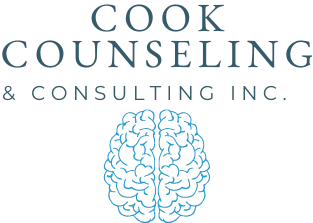Anxiety. That unwelcome companion that whispers worries, tightens your chest, and steals your
focus. We all experience it from time to time, but for some, anxiety can become a constant,
debilitating force. Thankfully, there are effective tools to manage anxiety, and one powerful
technique comes from the world of Gestalt therapy: the Empty Chair Technique.
What is the Empty Chair Technique?
Imagine a therapy session where you’re not just talking to your therapist, but also having a
conversation with an invisible person (or part of yourself) sitting in an empty chair. That’s the
essence of the Empty Chair Technique. This powerful tool allows you to explore unresolved issues,
anxieties, and conflicting emotions in a safe and controlled space.
How it Works
The therapist guides you as you project your anxieties or emotions onto the empty chair. You might
imagine a specific person who triggers your anxiety, a situation you fear, or even a critical inner
voice. By directly addressing the “empty chair,” you can:
Externalize Your Anxiety: Giving your anxiety a form allows you to separate yourself from it, making
it feel less overwhelming.
Gain New Perspectives: Talking to the “empty chair” from different viewpoints helps you see the
situation from multiple angles, potentially revealing underlying causes and solutions.
Express Bottled-Up Emotions: The technique provides a safe space to express unspoken fears or
frustrations, fostering emotional release and clarity.
Practice Healthy Communication: By rehearsing assertive communication with the “empty chair,”
you gain confidence to address similar situations in real life.
Test Anxiety: Imagine the empty chair holding your worries about an upcoming exam. You might
challenge negative self-talk, visualize successful test-taking strategies, and build confidence in your
preparation.
Relationship Anxiety: If you struggle with trust issues, use the empty chair to represent a past
experience that fuels your anxiety. Explore the situation, express hurt feelings, and work towards
emotional healing.
The Power of Dialogue: Examples in Action
Here are some examples of how the Empty Chair Technique can be used to address different types
of anxiety:
Social Anxiety: Imagine you’re giving a presentation and feeling intense anxiety. While facing the
empty chair, you might address your fear of judgment or public speaking, exploring alternative
communication styles or relaxation techniques in this safe space.
Performance Anxiety: Are you an athlete plagued by pre-game jitters? Sit down with the “empty
chair” as your anxiety and explore what victory and failure truly mean to you. You might discover a
need to redefine success or develop coping mechanisms to manage pressure.
Work-Related Anxiety: If you struggle with a demanding boss, use the empty chair to voice your
concerns directly. You can practice assertiveness, set boundaries, or role-play a difficult
conversation, all through the power of dialogue with the “empty chair.”
The Takeaway: A Tool for Your Anxiety Toolbox
The Empty Chair Technique isn’t a magic solution, but it’s a powerful tool to add to your anxiety-
management arsenal. It promotes self-awareness, empowers you to challenge negative thought
patterns, and provides a safe space to confront your fears.
If you’re interested in exploring the Empty Chair Technique, consider seeking a qualified Gestalt
therapist. They can guide you through the process and help you unlock the benefits of this powerful
therapeutic tool.
References
Mental Health Treatment San Diego. (n.d.). Gestalt therapy techniques examples.
https://psychcentral.com/health/gestalt-therapy
Zur, O. (2023, September 26). Gestalt therapy: Definition, techniques, efficacy. Verywell
Mind. https://www.verywellmind.com/what-is-gestalt-therapy-4584583

